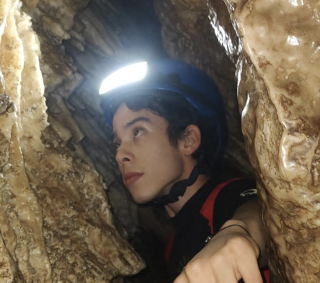Caves in the Americas: A Luminous Look at Dark Environments
Caves in the Americas: A Luminous Look at Dark Environments!
MORE IN THIS SECTION
Caves in the Americas: A Luminous Look at Dark Environments!
Complete darkness, mysterious animals, rocks shaped by time, legends and stories filled with mythology… From Plato to Saramago, caves are environments that provoke deeper reflections beyond their subterranean corridors. How many mysteries do our scientist friends still have to uncover in the underground world? After all, no cave is ever the same! Each one is unique in various aspects: its type of rock, the animals it harbors, the history it keeps.
True natural laboratories below the Earth's surface, these caves permeate popular imagination through a collective unconscious built since pre-modern writing times, when they housed our hominid ancestors and inspired them to create their cave paintings. Today, we can learn about their epic stories engraved on subterranean walls, which even time has not been able to erase. These early homes, shaped by the force of river waters, geological movements, rain, wind, and many other weathering processes, showcase the power of natural cycles. Our visits to these millennia-old spaces are merely a tiny fraction of time compared to geological time.
RELATED CONTENT
South America, across its entire territory, is one of the world's largest treasures in terms of speleological heritage. Countries like Brazil have registered over 20,000 cavities, a number that is likely underestimated due to the vast territory, low investment in science, and difficult access to terrains, which result in fewer discoveries. Speleology, the science that studies natural cavities, can increasingly highlight the significance and diversity of these underground environments.
For example, South American paleotocas, a subject of ongoing debate in the scientific community, might be considered caves or not, as they were not formed by geological movements or water excavation, but by the massive claws of awe-inspiring animals like giant sloths, extinct around 10,000 years ago, part of the megafauna group. This variety of spaces also generates intense diversity in subterranean formations.
The most well-known speleothems are stalactites, which hang down from the ceiling, and stalagmites, which "grow" up from the ground due to dripping and deposition of materials. These speleothems are often featured in games, movies, and TV shows, as natural elements formed through a slow process of dissolution and recrystallization of mineral-laden water droplets over long periods. However, the beauty of these formations lies in their diversity, which is little known to the general population. Names may vary from region to region, but we have speleothems shaped like bacon, pine trees, columns, dams, cauliflower, rafts, and curtains, with color variations depending on the minerals deposited in their formation.
The invitation to learn more about this incredible and diverse world is made. Caves come in all varieties: spacious and cramped, wet or dry, with varying degrees of difficulty, spread across various parts of the globe. The key is to understand to respect, appreciate their magnitude, beauty, and symbolism! The world of darkness below the earth must thrive so that our life above the earth can continue to shine. If caves are not protected, we will, symbolically and physically, be buried with them. What will be the next cave you explore? What new discoveries will you make with your flashlight on and your eyes wide open? It's time to illuminate our view of the brilliant darkness beneath our feet.







LEAVE A COMMENT:
Join the discussion! Leave a comment.